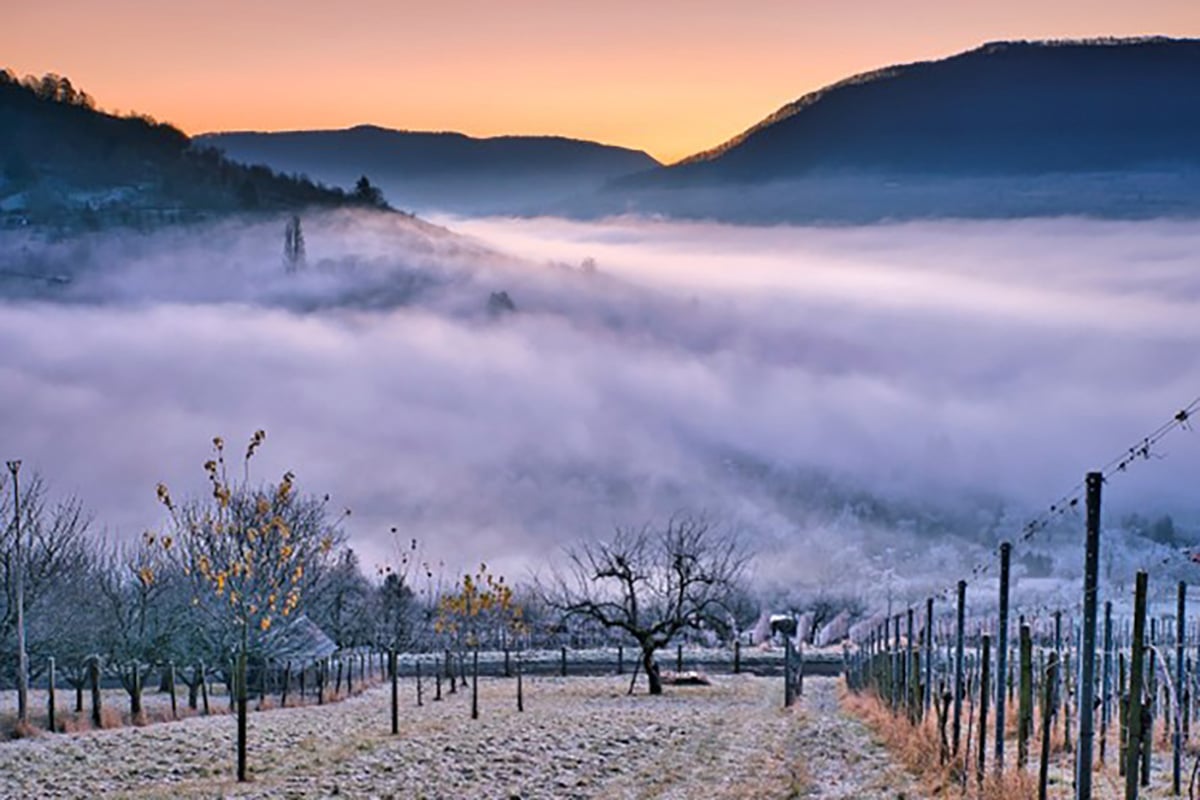

Harvest season is over, the weather has begun to turn, the ground is starting to freeze (depending on the location), and grape growing season is officially over. What do vineyards do now that their ability to grow and harvest new plants has been hindered by the changing seasons?
Despite what you may think, vineyards are still quite busy in the winter. And while they may not need as many people to help harvest and keep the plants watered and fed as they do during the spring and summer months, there are still things to be done around the vineyard.
The grape vines do not merely “go to sleep” during the winter months and still need to be cared for, pruned, and protected, so that they remain healthy and strong once the warmer weather arrives in the spring.
In addition to caring for the plants during the winter, if the vineyard is also a winery (meaning they don’t just sell their grapes to other winemakers) they will also be busy with the winemaking process from that year’s harvest.
What Happens on a Vineyard After Harvest?
Pruning the Vines
The first order of business after harvest is pruning. Pruning involves trimming away excess growth, focusing on the healthiest canes that will bear fruit in the upcoming year. This not only shapes the vine but also encourages proper air circulation and sunlight exposure.
Pruning is a delicate process and requires you to be fairly precise when cutting down the plants. If you over-prune your plants the vines will have to work extra hard to produce new leaves in the spring that it can lead to the grapes not becoming as ripe as they should. If you under-prune the plants you’ll end up with the opposite problem, too many grapes that are of low quality.
Finding the right balance when pruning the plants will help set the vines up for success come springtime when they need to regrow their leaves and produce new fruit.
Protecting Against Frost
Winter nights can be harsh, posing a threat to delicate vines. To shield them from frost, vineyard owners often employ frost protection measures. These can range from using wind machines to circulate warmer air, setting up heaters, or even spraying the vines with water to create a protective ice layer.
Covering the Roots
Beneath the surface, grapevine roots need insulation from the biting cold. Mulching is a common practice in winter vineyard management. A layer of organic material, like straw or wood chips, is spread around the base of the vines. This acts as a cozy blanket, safeguarding the roots from extreme temperatures.
In addition to adding this layer of protection, some vintners may also plant cover crops near the vines that can help keep the roots warm while also adding more natural nutrients into the soil.
Protecting the existing plants as the winter months arrive will help prevent damage and allow for the plants to naturally bloom on their own in the spring without having to replant.
Monitoring Moisture Levels
While it may seem like grapevines are hibernating during winter, they still require attention. Monitoring soil moisture levels is crucial. Adequate hydration safeguards the vines against dehydration and ensures they enter the dormant season in optimal health.
The Winter Transformation
Dormancy and Chill Hours
As temperatures drop, grapevines enter a state of dormancy. This is a bit like a deep winter nap for the plants, a period of rest crucial for their future growth. During dormancy, chill hours, the cumulative time spent below a certain temperature, play an important role. Adequate chill hours are necessary for the buds to break in spring, signaling the start of a new growing season.
Winemaking in the Winter
Not all vineyards produce wine, some vineyards only grow the grapes that are then sold to the winemakers that will create the actual wine. But in the case that the vineyard also produces wine, there are may things going on during the winter in terms of wine production.
Barrel Aging
While the vines rest, winemakers are hard at work crafting the wines from the recent harvest. Winter is the perfect time for barrel aging, a crucial step in the wine production process. The cool temperatures allow the wine to interact with the oak barrels, extracting the various flavors and aromas.
Blending and Bottling
Winter months are also dedicated to the art of blending. Winemakers meticulously mix different batches of wine to create the perfect flavor profile. Once satisfied, the wines are bottled and labeled, ready to grace the tables of restaurants, tasting rooms, and your own home in the coming months.
Tasting and Planning
Winter can also be a season of reflection for winemakers. Tasting sessions are held to evaluate the progress of the wines maturing in the cellar. This assessment guides decisions for the next harvest, influencing vineyard practices and grape selection.
Winemakers are always learning from the previous year and the previous harvest. My holding these tasting and planning sessions they can get a better understanding of the flavor profiles that their wines will hold from the previous harvest as well as any changes they may need to make to their process.
Winter on the Vineyard Is Extremely Important
As winter blankets the vineyard, there’s a flurry of activity beneath the surface. Pruning, protecting against frost, and nurturing the roots ensure the vines endure the cold and emerge vibrant in spring. Meanwhile, in the winery, the winemaking process continues, with barrels aging, blends evolving, and the promise of future vintages taking shape.
So, next time you savor a glass of wine, remember that winemaking and grape growing is a yearlong process that requires skill and talent. Vintners and winemakers don’t get to take the winters off, but it can be a more relaxing time depending on the individual process adopted by the vineyards.